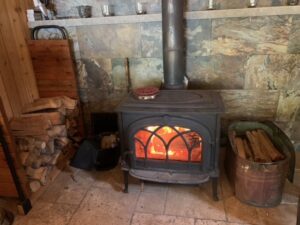2024-Nov-01
Wood Stove Safety Tips
 There’s nothing is cozier than a crackling fire on a chilly night. Wood stoves are a great source of supplemental heat and are generally more efficient at producing heat than a fireplace. But warm and cozy can turn dangerous if your wood-burning unit is not properly installed or regularly maintained.
There’s nothing is cozier than a crackling fire on a chilly night. Wood stoves are a great source of supplemental heat and are generally more efficient at producing heat than a fireplace. But warm and cozy can turn dangerous if your wood-burning unit is not properly installed or regularly maintained.
Do
- Keep children and pets away when you are burning and keep anything combustible at least 3 feet away from the stove.
- Test to be sure your carbon monoxide and smoke alarms are in working condition. Both types of alarm should be located outside each sleeping area and on every level. Also keep a working fire extinguisher in an accessible location.
- Before lighting, open the damper to allow for good airflow and keep the damper open until the fire is out and the ashes are cool enough to touch.
- Remember ashes can take several days to cool completely. Regularly remove ashes and dispose of them in a covered metal container at least 10 feet away from buildings or vehicles.
- Have your chimney cleaned and inspected regularly
- If you burn regularly, checking halfway through the burning season to check for creosote buildup is also a good idea
- Have your wood stove inspected by a professional at least once every year for any wear and tear, and watch for buckling, cracks, open seams or corrosion.
- Have a fire escape plan and regularly review it with your family members. Tips on creating a fire escape plan can be found here.
 Don’t
Don’t
- Make a larger fire than the stove can handle. Over firing will result in flames entering the flue pipe or chimney, and can cause damage or result in a fire outside of the unit
- Let ashes build up in the bottom of the stove
- Burn anything other than wood in your wood stove. Other combustibles (rubber, plastics, garbage, coal, etc) can damage your stove and could also explode or give off toxic fumes
Exercising due care and focusing on safe practices will mean your wood-burning stove will keep you toasty warm throughout the colder months. The Canadian Safety Council has more great information on woodstoves here.
This web page is intended for general information purposes only. While we have attempted to provide information that is helpful for our readers, GBA accepts no legal liability for the contents of this web page. Ensure you check original sources of information on fire prevention and response for further details and updates. For advice regarding your insurance needs or liability insurance coverage, please contact your insurance broker.
